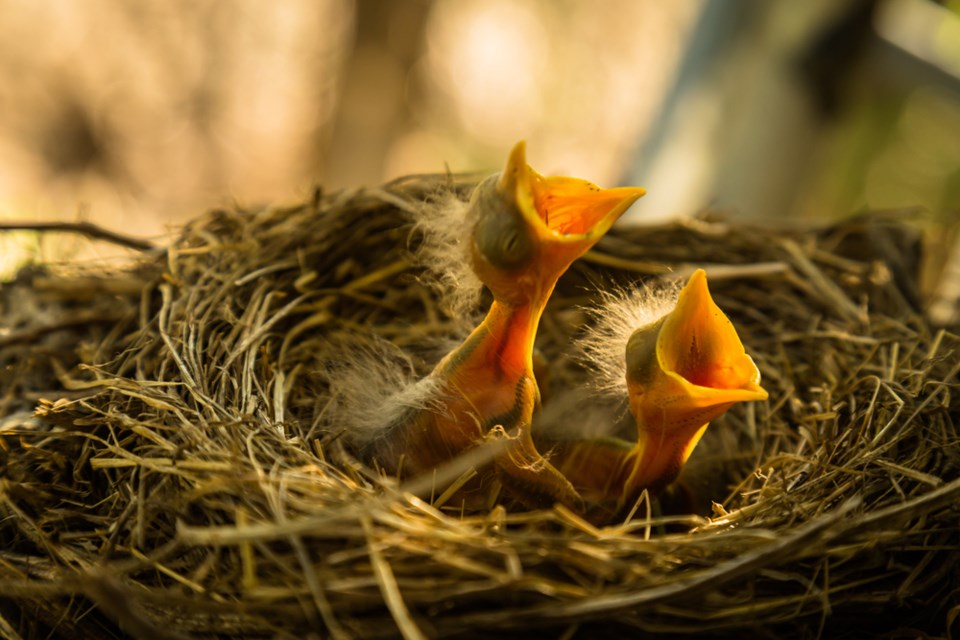Spring is usually a busy time for the birds and the bunnies, and people are likely to come across baby animals in their yard in need of help. There are a few important things to know before intervening with the cycle of nature, to make sure no harm is done.
The number one rule in rescuing distressed wild animals: make sure they are truly in distress. The number two rule is to be careful when approaching a wild animal, for both their safety and yours.
And, of course, the unofficial third rule is to leave the baby bunnies where you found them.
The Wildlife Rehabilitation Society of Saskatchewan has a plethora of information regarding what to do when you come across a distressed animal, whether it be a wobbly fawn or a grounded hawk.
The first step is to know whether the animal in question is the type of baby that mothers often leave unattended. For example, a doe will leave her fawn unattended while she forages, to avoid attracting predators to the vulnerable young. Mother foxes do the same with their kits.
Similarly, rabbits only return to their babies either very early in the morning or very late at night, to avoid exposing them. Removing bunnies from their den for too long can dissuade the mother from returning, so rehabilitation volunteers will often tell you to “put the bunny back.”
Fledgling birds are also often left on the ground for up to two weeks, to teach them how to fly. If a nestling — a baby bird that has bald patches and is unable to stand or grip your finger as a perch — is found on the ground, that is cause for human intervention.
Nestlings should always be returned to their nest, if possible, as long as the parents return eventually. If not, they need to be kept warm and turned over to a rehabilitation center, and never fed — a bird’s diet is very complex and feeding them the wrong thing could be harmful.
Baby animals that have been abandoned should be turned over to a rehabilitation center as soon as possible, to ensure both their health and future. Some animals, like fawns or ducks, are able to bond with a new mother within a certain timeframe, and can even bond with humans — which sounds adorable but can end up detrimental to their survival skills.
Injured or sick animals should also be reported as soon as possible, and people are encouraged to avoid approaching the animal without seeking advice first. Rehabilitation centers are manned by volunteers who have extensive knowledge of how to care for wild animals properly and prepare them to be released successfully back into their natural habitat.
The local non-profit is the Wild & Cared Free Rehabilitation Centre, who can be contacted through Facebook with concerns about injured or abandoned animals. Emergency situations can warrant a phone call to the Moose Jaw Animal Clinic during regular hours, at (306) 692-3622.
Volunteers care for some of the animals surrendered to them, and will sometimes refer concerned individuals on to the Wildlife Rehabilitation Society of Saskatchewan, which has a hotline available at (306) 242-7177 for people to call.
The WRSOS website also offers information regarding what to do about many wild animal situations.




